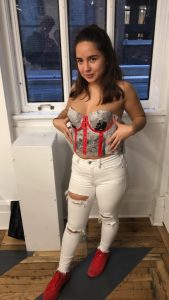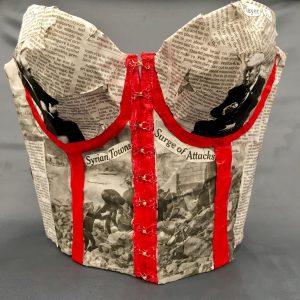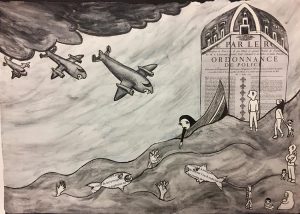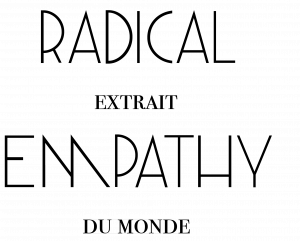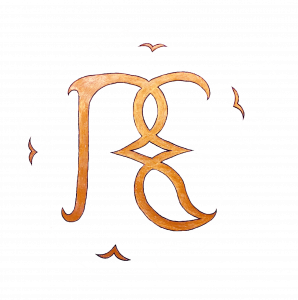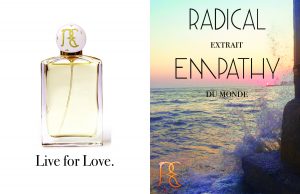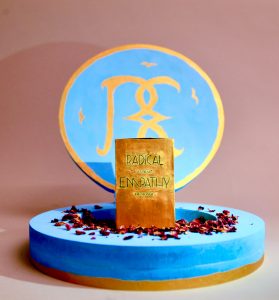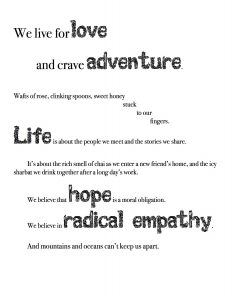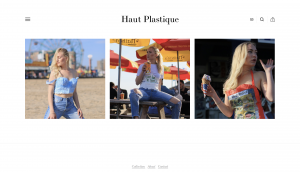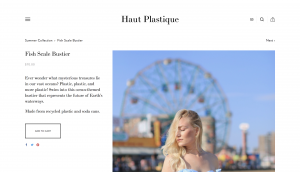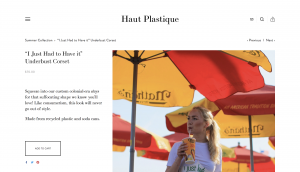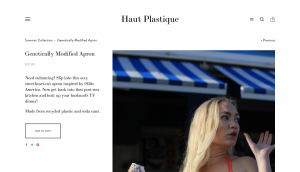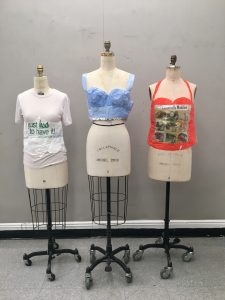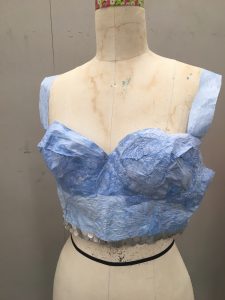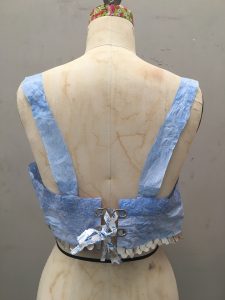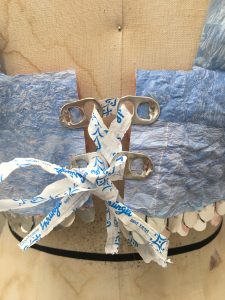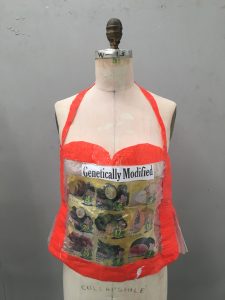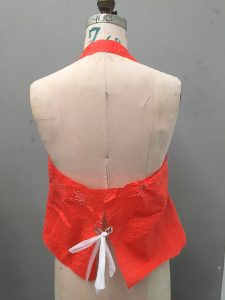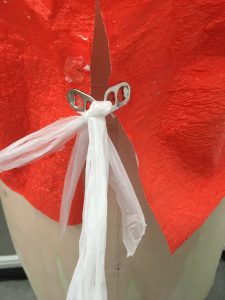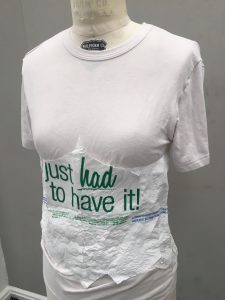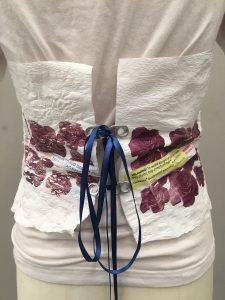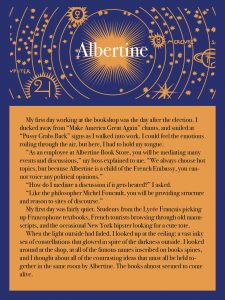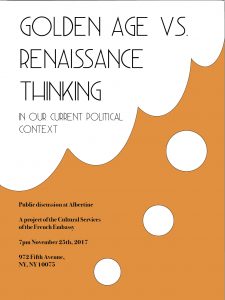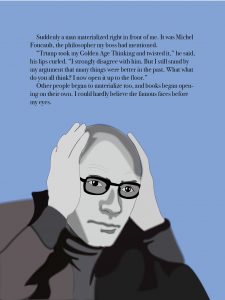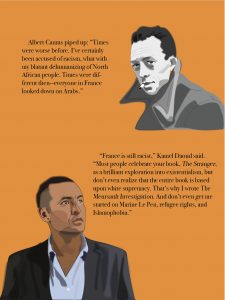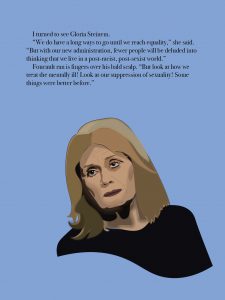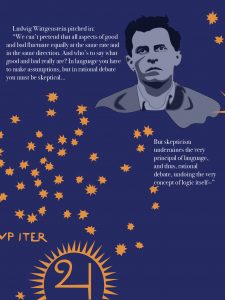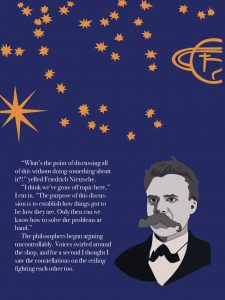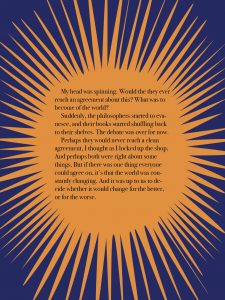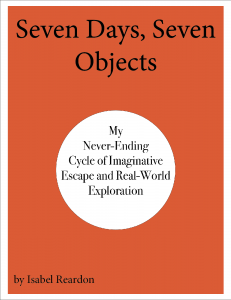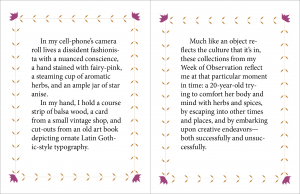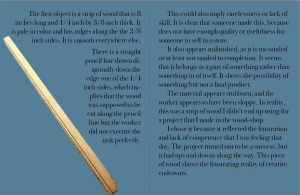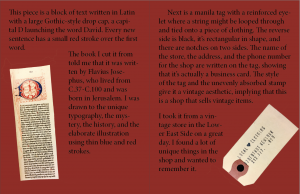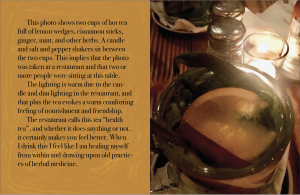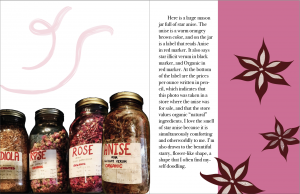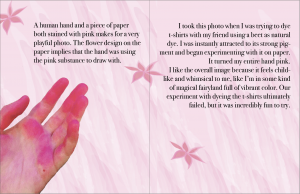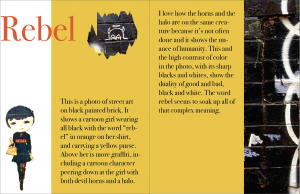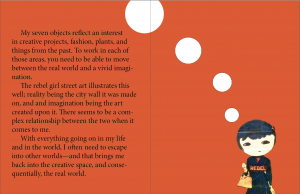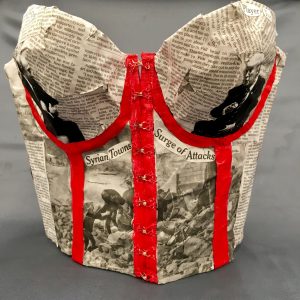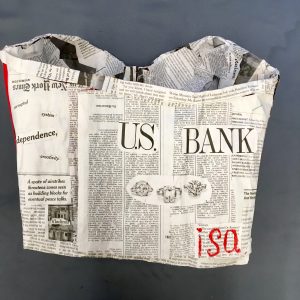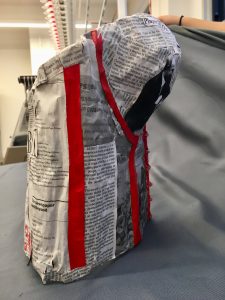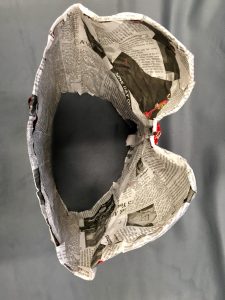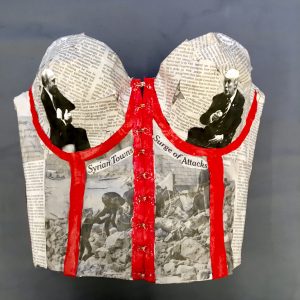I noticed a lot of things when I turned my phone off and took a walk around my neighborhood. I live near a park, so it was easy to find the nature that John Stilgoe gushes about. One place that struck me in particular—as it always does when I walk by it—was the Greek Orthodox Church on the edge of the park. I noted fresh evening air sweeping through the trees that secluded the church. I took in a whiff of rain and then a stench of garbage left on the street. I heard chatter in the distance, car noises, dogs barking. Watching everyone’s days go by as I stood stagnant, I began to contemplate existence; not in a complex philosophical way, just in a mindfulness way. I thought about the circle of life, and the cycle of food and waste (there was a grocery store across the street and trash bags piled up on the corner). All of this life seems to revolve around something, although I’m not sure what. Some call it god. I looked up at the curves of the church dome and the image struck me as iconic. So I sketched the silhouette of the dome and played with the shape. It began to turn into a bird, which made me think of freedom and the sky, and then, the universe. So using Photoshop and Illustrator I incorporated a photograph of the night sky into my drawing, creating the final product of my visual response.
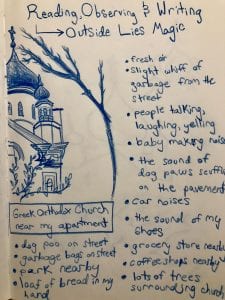
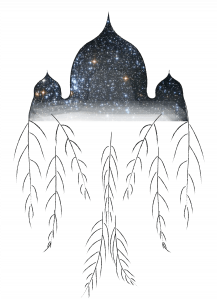
Category Archives: Integrated Studio 2
Cross-Course Learning Portfolio Reflection Post
I was born in New York City, and then lived in Vermont, Senegal, Switzerland, and Canada. Because I’ve had access to such drastically different worlds, culturally and financially, I can see how separated they are from each other, how systems are made to work for the fortunate, and how badly we need to communicate and really listen. That is something I aim to express through my work at Parsons: empathy.
During my first year at Parsons, I have gained access to many new resources, with which to develop new skills. This can be seen through my class projects. For example, in Seminar and Studio 1, I had to launch an imaginary perfume company—including designing the scent, logo, label, and bottle, naming the product and company, and making a magazine spread, a perfume box, and a set display. I had never done any of this stuff before, but I now feel somewhat confident in doing all of it. I used the skills I learned in this project for other classes, such as using my wood shop skills in Space and Materiality. I also worked a lot with newspaper collage, the refugee crisis, and the Syrian War, as seen in these two projects:
I also explored more abstract, introspective topics, such as what it’s like being in a new place, and philosophical questions:
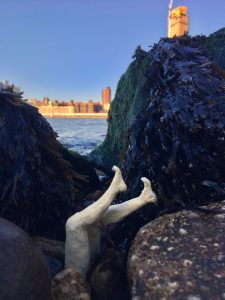
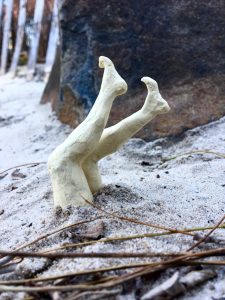
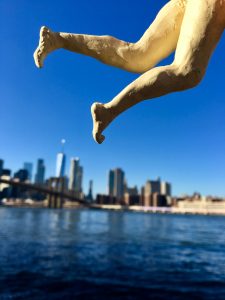
Here’s a link to a PDF of a philosophical short story I wrote and Illustrated using Adobe Illustrator and InDesign:
Most of my projects are pretty intellectual, or atlas verbal in some way, so they require research. This links my art to academia, something I’m still very much passionate about.
I’ve found that in my work, meaning catapults me into working hard and getting excited. I have to have a profound sense that the thing I’m working on is somehow important to the world. That’s why I draw upon philosophy, politics, and different forms activism.
The perfume project I mentioned earlier is my first highlight because I feel like I tapped into something real and original. Aiming to create a product to bridge the gap between different realities, so I drew inspiration from my experiences working at a refugee camp in Athens, Greece. Like I wrote above, we live in separate worlds, and I have been lucky enough to travel between them. My perfume, Radical Empathy, gives others the opportunity to do the same. Profits from my imaginary perfume go to the refugee crisis. I enjoyed working on every aspect of the project, and integrating different skills under a common theme to create something meaningful. If I were to do this project again, I would have painted my set display more neatly, used a paler blue, and worked harder on my perfume box.
This, like many other projects, opened my eyes to what is possible. I realized not only how people from different backgrounds need to come together, but how much fashion, design, and activism must come together. This leads me to my next highlight—a project where I developed a new line for Radical Empathy as my final project this semester. I called the line Haut Plastique, as each piece is made entirely of recycled plastic. My final paper in Seminar 2 was linked to this project, where I explored the dark underbelly of the fashion industry and its possibilities for change. I’m very proud of the work I created, especially seeing as this was my first time working with fabric-like material to make something wearable.
Here is a link to a website I designed to display this project:
https://isabel-reardon-pf58.squarespace.com/
In the future I would like to write and illustrate a memoir of the many experiences I’ve had learning about activism and creativity, and how they interact. This is a project I’ve already started on. In general in my time at Parsons, I want to continue to work in different mediums, hone my skills, collaborate with people who have different skill sets and different perspectives, and ultimately explore empathy through the intersection between activism and creativity.
Integrated Studio 2 Final Project
Here is the link to my project, with high-quality images displaying my work:
https://isabel-reardon-pf58.squarespace.com/
Every year, at least 8 million tons of plastic are dumped into the ocean. That plastic, along with chemical sludge and other debris, travels through the water and settles into “gyres”, trapped by currents, forming islands of garbage.
But can’t we use some of our trash, instead of piling it into oceans and landfills?
This website is part of an art project that explores the connections between environmental degradation, capitalism, and female beauty standards, drawing upon times in history that have led to the world we live in today. I collected plastic bags and soda cans from city streets, beaches, and my own consumption. Using an iron, I fused the plastic bags together and made bustiers out of the material, attaching and adorning them with parts cut aluminum cans and old newspaper. Each wearable statement has a different texture, material, cut, and message, but together they explore the intersection between design and activism—two fields that desperately need each other.
I was fortunate to work with photographer Katie Comfort and model Klara Nilson for our photoshoot at Coney Island. I chose the setting, backgrounds, and props to complement each topic, shining a light on consumerism and evoking nostalgic Americana.
Haut Plastique is about taking something unwanted and unsustainable, and reversing it. I want my pieces to draw in the eye, and with it, the mind. Ultimately, I want people to think critically about what they’re putting on their bodies, and the effect is has on the world around them. A fraction of the hypothetical profits from each piece go to the topic they’re each about.
Here are some screenshots from the website I linked above:
Here are some images of the pieces during the final critique:
Fish Scale Bustier:
Genetically Modified Apron:
“I just HAD to Have it” Underbust Corset
Project Proposal
In seminar I will be examining how fashion and business should incorporate ethics and activism to create a better world, and in Studio I will be putting this into reality by creating my own ethical line of garments. My imaginary company, Radical Empathy, will use sustainable materials and careful thought to create political statements through wearable art. Imaginary profits from each piece I make would go to the topic they’re each about.
More specifically, I will be releasing two bustiers using plastics that we are dumping into the ocean. I have collected plastic bags from beaches, streets, and my own consumption, fuse them together to make fabric, and make bustiers out of the material. The first bustier will be ocean-themed; the cups will resemble seashells and will be made out of a blue and white marbled fabric that I have created, and below I will have white plastic-lace cut in a scalloped design to create the look of sea-foam. To go with this look, I will have a wrist cuff made from cut soda and beer cans, resembling fish scales and thus reminding people that this was made by humans, and of the tragic effect we have had on nature. That is my idea for the ocean bustier; to evoke the ocean with human-made materials that actually pollute the ocean in the attempt to make people think critically about what we’re doing to our planet.
The second bustier will be in a colonial “stay” style, with tie-on sleeves. The fabric will be white fused with slogans and words from plastic bags I have collected, showing that capitalism is all around us. I want to show both the earlier times of colonialism and our current day capitalism, provoking the wearer and viewer of my piece to think about how the two connect. One of the slogans on a bag I found says I have says “I just HAD to have it!”, which could refer to both consumerism and the desire to occupy territory. Capitalism and things leftover from the colonial era are all around us, and can trap us in a suppressing society—much like a corset traps a woman’s body. With this look will be a colonial-style “mitt” made from white plastic-lace and clear plastic.
This project is about taking something unwanted and unsustainable, and reversing that. Each garment I make must spark conversation, raise awareness about an important issue, be aesthetically pleasing, wearable, and be sustainably manufactured. I envision customers wearing my garments to parties and events—places for conversations. I want people to see my work and ask what is is and what it means, sparking discussions about the cause and thus raising awareness and building empathy.
Beginning of Final Project for Integrated Studio 2
Over spring break I experimented with fusing plastic bags together to create fabric for my bustiers. The process begins by putting 2-6 layers of plastic over tracing paper and laying it all on an ironing board. Then you put another sheet of tracing paper over the plastic, and iron over that. The heat of the iron and the type of plastic decides the texture of the final product. I got a lot of leathery textures and when I ironed plastic on a very high heat and held it down in one place for a few seconds, I found that the plastic began to lace. I’m thinking of making white plastic lace and cutting it in a scalloped design to create the look of sea-foam, and using it for my ocean-themed bustier. I will be using blue and white marbled fabric I made for the top of that bustier. To go with this, I also made a cuff from cut soda and beer cans, deliberately showing labels and designs on the cans to remind people that this was made by humans, and of the tragic effect we have had on nature. That is my idea for the ocean bustier; to evoke the ocean with human-made materials that actually pollute the ocean in the attempt to make people think critically about what we’re doing to our planet.
The second bustier will be in a colonial style, with tie-on sleeves. The fabric will be fused with slogans and words from plastic bags I have collected, showing that capitalism is all around us. I want to show both the earlier times of colonialism and our current day capitalism, provoking the wearer and viewer of my piece to think about how the two connect. One of the slogans on a bag I found says I have says “I just HAD to have it!”, which could refer to both consumerism and the desire to occupy territory. I’m not sure what color barricades I will be using, but I create a leathery orange texture that might work. I think it’s fitting that this is a bustier because capitalism and things leftover from the colonial era are all around us, and can trap us in a suppressing society—much like a corset traps a woman’s body.
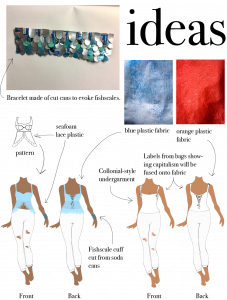
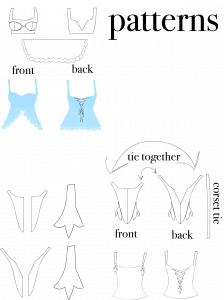
My next step, now that I have made fabric and the bracelet, will be to begin sewing and continue collecting plastic bags with designs that I want to use. I will be using google, classmates friends and family, and school sewing workshops to learn about sewing. The next step will be to put it all together and figure out where slogans should appear. Then, if I have time, sizing for my models and photoshoots at Coney Island, a very famous spot for ocean pollution as well as capitalism.
Pitch for Final Project: Studio 2
Because the fashion industry pollutes the earth and violates human rights more than almost any other industry, it is important to come up with business models that embody an ethical approach.
In seminar I will be examining how fashion and business should incorporate activism to create a better world. My imaginary business, Radical Empathy, enhances and works WITH local economies rather than exploiting or ignoring them.
For my final project in Studio I will be releasing a line of corsets and possibly other garments. This concept is inspired by two projects I did last semester. One was launching an imaginary company called Radical Empathy, a brand dedicated to helping the refugee crisis. This line will be a part of this company.
The other project that inspired this was a corset that doubles a political commentary on the Syrian proxy war.
For this project, I’ll make at least two corsets using metals and plastics that we’re dumping into the ocean. I will collect plastic bags from beaches and streets, fuse them together to make fabric, and make corsets out of the material.
I will also collect soda cans, cut them into scales, and sew them onto one of the corsets to imitate the look of fish scales to show the poignant reality of what we have done to nature. The other corset will be more simple, focusing on the logos on the plastic bags, what they tell us about our society, and the concept of using plastic bags as a fabric.
Here is the criteria for each garment I make:
•sparks conversation/raises awareness about an important issue
•aesthetically pleasing
•wearable
•sustainable manufacturing/small footprint
•has a way to contribute money to the cause it speaks about in a truly useful way
The idea for this comes from my time living in Senegal, where I saw artisans making toys out of cut-up metal from the street. It is also a technique similar to that of El-Anatsui, a Ghanaian artist who makes beautiful tapestries out of bottle caps and other metal waste wired together. These methods are a way of taking something unwanted and unsustainable, and reversing that.
I envision customers wearing my garments to parties and events—places for conversations. I want people to see my work and ask what is is and what it means, sparking discussions about the cause and thus raising awareness and building empathy.
Ultimately, empathy is about traveling to another person. We live in separate worlds, and I’ve been lucky enough to travel between them. Radical Empathy gives others the opportunity to do the same. Profits from each piece go to the topic they’re each about.
Integrated Studio 2: Bridge 2
In Integrated Studio 2 we had to choose a location from https://www.atlasobscura.com/things-to-do/new-york and build a project around it, incorporating into it an element of personal, public, historical, and fictional. I chose Albertine, a francophone-anglophone bookstore right near the MET, across the street from Central Park.
First we conducted preliminary research, and came up with 25 interview questions about our chosen site so we could narrow them down to just a few. Then we each visited the location itself, taking notes on sites, smells, and any type of observation that came to mind. I interviewed three people—two employees and one customer.
I was most intrigued by what one of the employees said about the debates that they held, how they provided structure and logic to sites of discourse, following the philosophy of Michel Foucault. When I asked him about political associations with Albertine, he froze up a little and told me that they are supposed to remain neutral because they are an extension of the French Embassy.
As I looked around the bookstore, I was enthralled by all of the ideas that have travelled here through books and the people reading them. I remembered the heated discussions the employee was talking about Albertine hosting, and I began to wonder: if books could talk to each other, what would they say?
I formed a short story around this idea, writing from the point of view of an imaginary newly-hired employee at Albertine, and placing it in the context of our current political climate. In the story I reference Donald Trump and Marine Le Pen, and I brought to life the books of several famous philosophers and writers whose titles I found in the bookstore. I illustrated my story using Adobe Illustrator and lay it out in InDesign.
I drew inspiration from the stunning constellations painted on the ceiling of Albertine, and the golden glowing lamps that hung throughout the rooms. I decided that my color scheme would be night sky blue, golden yellow, and light blue. I drew all of the dead people in the story in black and white, and all of the alive people in color. I wanted to create a dreamy fantastical aesthetic full of intricacies and attention to detail, to mirror the ideas brought up in my short story.
During the critique I dropped the pages and watched them flutter onto platform. “This is a deconstructed book,” I said, “but I will lay it out for all you to read.” I arranged the pages in order on the platform and we all stood over it as different classmates took turns reading aloud. This allowed for everyone to see the design and layout of the whole thing and notice the color scheme and how the pages interacted together. The symbolic reason that I chose to have it deconstructed was because I felt that it matched the theme of the story and the concept of books flying out of their shelves and people materializing from them. If I were to do this again I might think of another way to display it that is more clearly a deconstructed book. For example, I could have made it into a book first and then torn the pages out.
Seven Objects, Seven Days
I collected one object from my day for one week. I thought I was choosing things randomly from my days, or things I liked, but the objects together and alone said a lot more about me than I thought they would.
I struggled with InDesign, as it was my first time using it and I experience a lot of glitches. But I learned a lot about the program, and I was able to learn about graphic design and illustration as well. For this project I used Adobe InDesign, Illustrator, and Photoshop.
Int Stu 2: Project Deconstruction
My Seminar 1 teacher assigned us the task of making paper dresses that expressed a political statement. I struggled with the assignment at first, having never done anything with fashion, let alone with 3D paper constructions. But when I began to think about it conceptually, ideas began to flow. What are clothes for? To cover, to constrict, to support. What are the components to a dress? I went to its skeleton; the corset. Because I wanted to make a political statement about current politics and the Syrian War, I chose to use the latest NY Times as my paper. I explored the Syrian revolution as a proxy war between Russia and America through internet research, information from the newspaper I was using, and information I already knew. The stomach of the corset, or, the core, shows the core issue; the wreckage as a result of war. The cups, which are meant to support breasts, show Vladimir Putin and Donald Trump, who support the Syrian war. The words “Player 1” and “Player 2” imply that our politicians are treating war like a game to gain power over one another, and also hints that Putin, as player 1, is in control. I chose the color red as trim to simultaneously evoke the blood and rage of war, and the love and compassion needed to put and end to all of the violence, danger, and heartlessness.
Parts of the piece are a bit sloppy, but I think that adds to the concept of the piece. Layers upon layers of stories make up the messy nuanced reality of war and politics, and thus, my newspaper corset.
Since the project, I decided to make it more easily wearable. I cut down the back, punched holes on each side, and purchased a dark blue ribbon to lace through the holes. I chose blue for the ribbon so the overall color scheme would be red white and blue, the national colors of both the United States and Russia. Now the piece is fully wearable, and I am planning a proper photoshoot soon.
Although I had a lot of anxiety over this project, I ended up really enjoying it, and I am proud of the final product. It has inspired me to continue exploring the fashion, to make more wearable political statements like this one, and to potentially explore the intersection between fashion and activism.

